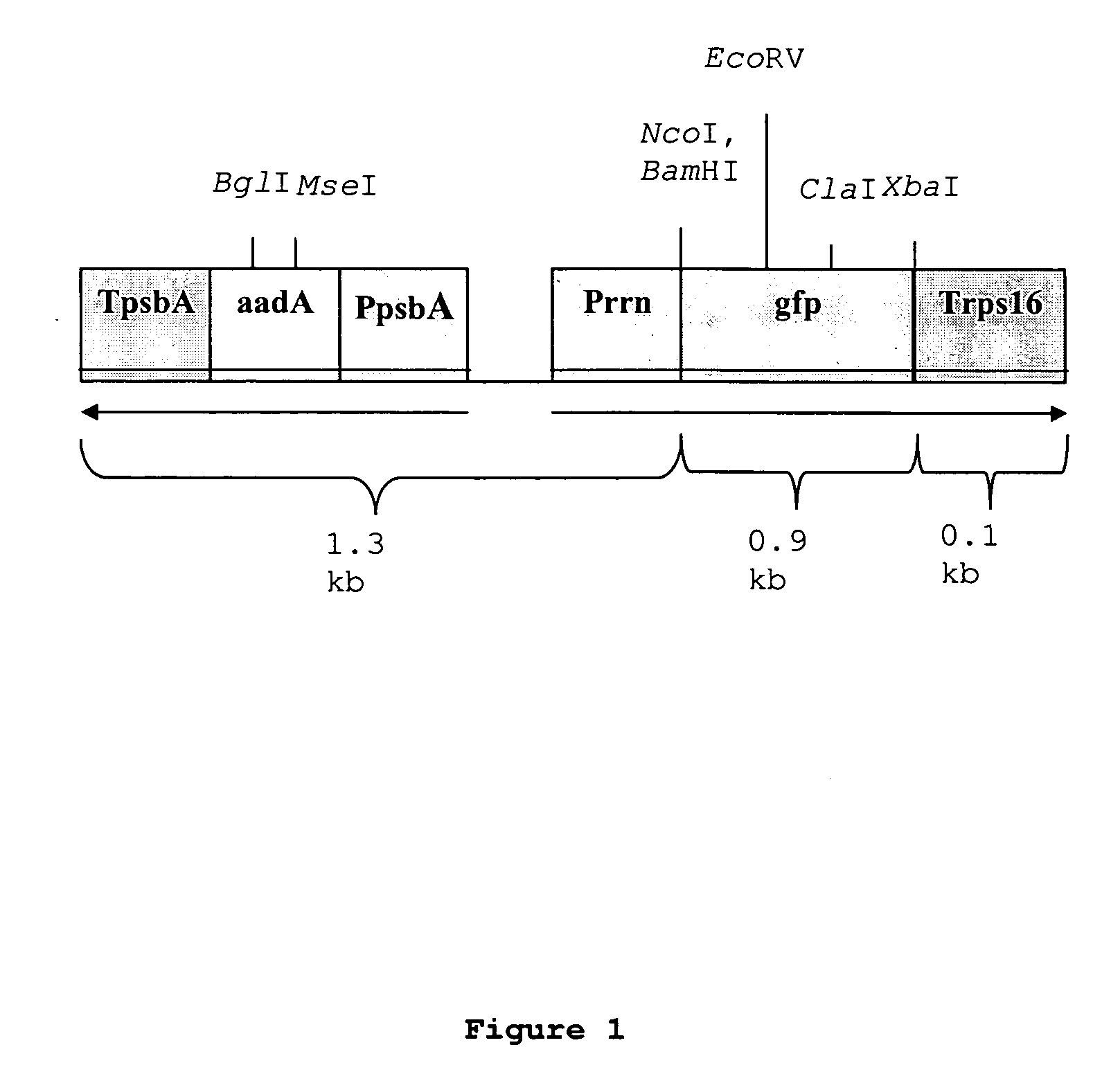Chloroplast transgenesis of monocots: bioconfined genetically engineered monocot crops that will eliminate transgene flow
a technology of monocots and chloroplasts, applied in the field of transgenic monocot plants, can solve the problems of low effort to produce the needed cellulase enzymes, corn grain-based ethanol cannot provide us the volume of fuel needed to seriously impact our liquid fuel supply, and the developed world is highly vulnerable to petroleum supply disruptions
- Summary
- Abstract
- Description
- Claims
- Application Information
AI Technical Summary
Benefits of technology
Problems solved by technology
Method used
Image
Examples
example
[0120] A chloroplast-specific plasmid construct was used, which was obtained from Dr. Maureen Hanson of Cornell University, as illustrated in FIG. 1. The construct is transferred to maize. The illustrated region is flanked by trnv-rps 12 / 7 plastid derived sequences. aadA represents the gene encoding aminoglycoside adenyl transferase, which renders resistance to spectinomycin and streptomycin. gfp is the green fluorescent protein gene from jellyfish. TpsbA represents the 3′ untranslated region of the psbA gene. PpsbA represents the regulatory region of the psbA gene. Prrn represents the regulatory region of the prrn promoter. Trps16 represents the 3′ region of the ribosomal protein gene. BglI, MseI, EcoRV, NcoI, BamHHI, ClaI and XbaI identify the corresponding restriction endonuclease recognition sites. Insert sizes are designated in kilobases (kB).
[0121] Explant Development for Biolistic bombardment: Development of multiple shoot meristems was performed as described in U.S. Pat. No...
PUM
| Property | Measurement | Unit |
|---|---|---|
| Electrical resistance | aaaaa | aaaaa |
Abstract
Description
Claims
Application Information
 Login to View More
Login to View More - R&D
- Intellectual Property
- Life Sciences
- Materials
- Tech Scout
- Unparalleled Data Quality
- Higher Quality Content
- 60% Fewer Hallucinations
Browse by: Latest US Patents, China's latest patents, Technical Efficacy Thesaurus, Application Domain, Technology Topic, Popular Technical Reports.
© 2025 PatSnap. All rights reserved.Legal|Privacy policy|Modern Slavery Act Transparency Statement|Sitemap|About US| Contact US: help@patsnap.com

